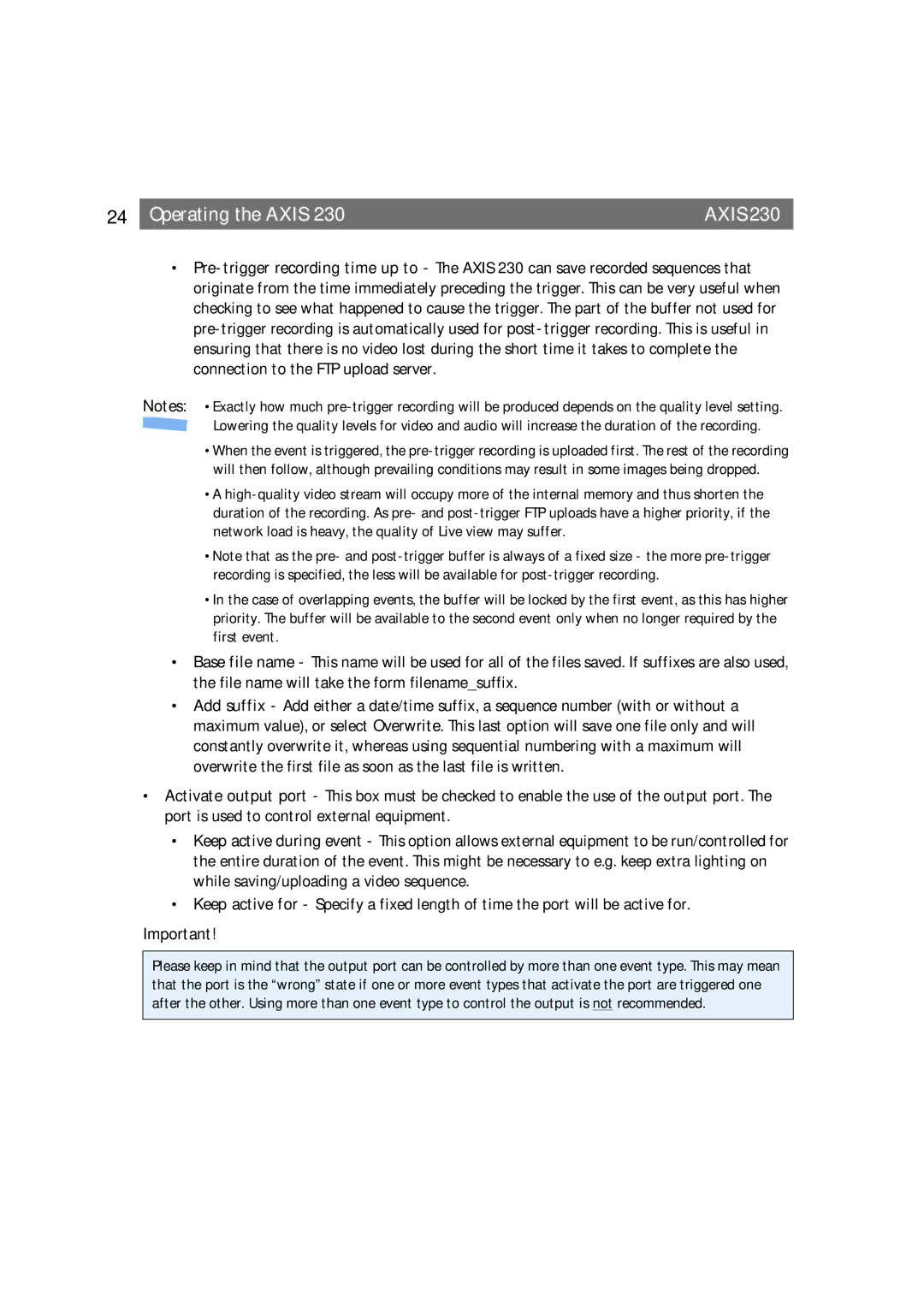
24 | Operating the AXIS 230 | AXIS 230 |
•
Notes: •Exactly how much
Lowering the quality levels for video and audio will increase the duration of the recording.
•When the event is triggered, the
•A
•Note that as the pre- and
•In the case of overlapping events, the buffer will be locked by the first event, as this has higher priority. The buffer will be available to the second event only when no longer required by the first event.
•Base file name - This name will be used for all of the files saved. If suffixes are also used, the file name will take the form filename_suffix.
•Add suffix - Add either a date/time suffix, a sequence number (with or without a maximum value), or select Overwrite. This last option will save one file only and will constantly overwrite it, whereas using sequential numbering with a maximum will overwrite the first file as soon as the last file is written.
•Activate output port - This box must be checked to enable the use of the output port. The port is used to control external equipment.
•Keep active during event - This option allows external equipment to be run/controlled for the entire duration of the event. This might be necessary to e.g. keep extra lighting on while saving/uploading a video sequence.
•Keep active for - Specify a fixed length of time the port will be active for.
Important!
Please keep in mind that the output port can be controlled by more than one event type. This may mean that the port is the “wrong” state if one or more event types that activate the port are triggered one after the other. Using more than one event type to control the output is not recommended.
